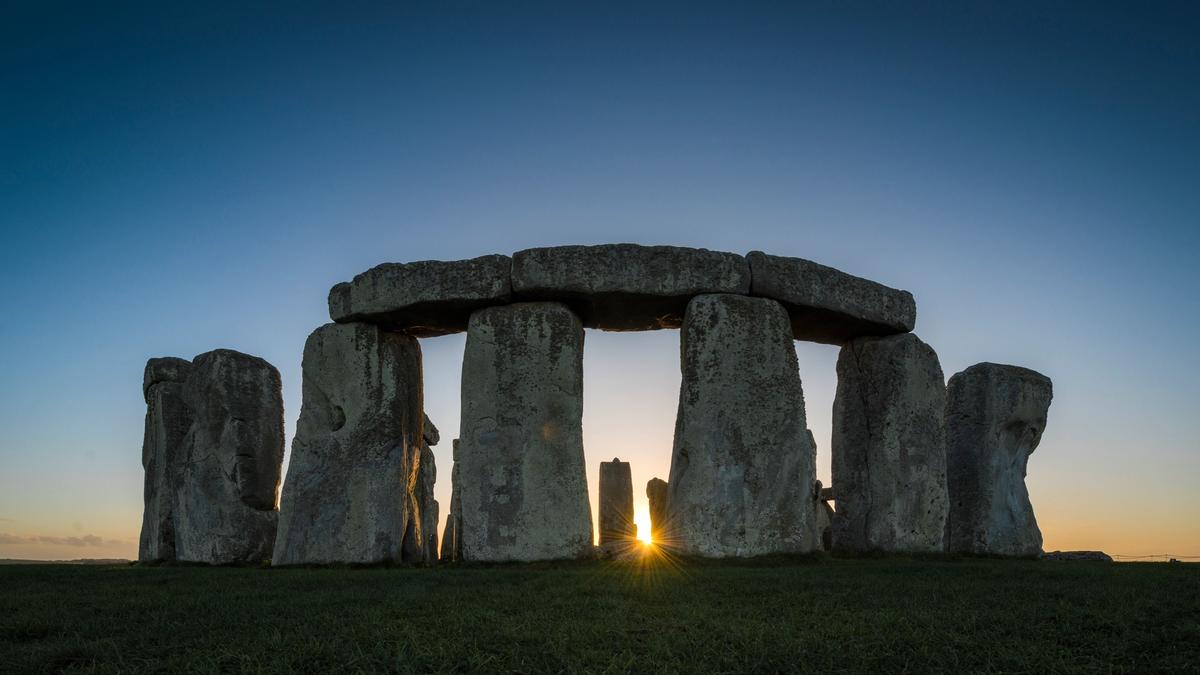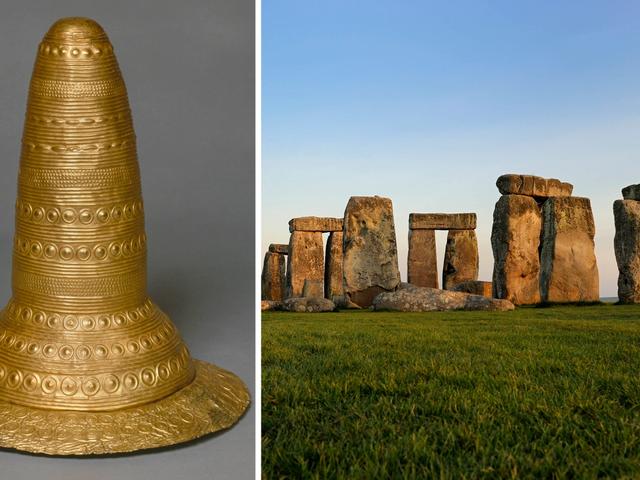Some of the mystery of Stonehenge and its place at the crossroads of the Stone and Bronze Ages will be “rolled away” by a major exhibition opening at the British Museum this week.
Although England’s Stonehenge is “one of the most recognisable sites on the planet”, the museum’s director Hartwig Fischer says it still has many unknowns. With the benefit of modern science and archaeological recontextualisation of the site and the surrounding area “this unprecedented exhibition” will answer some long-looming questions, Fischer says.
The World of Stonehenge (17 February-17 July) uses the famous location as a lens through which to see in much greater detail the way Neolithic society developed, from the introduction of farming in about 4,000BC to the construction of Stonehenge, the introduction of metalwork from Europe, the growth of cross-Channel trade and cultural change before the final decline of the Bronze Age. It is the first ever major exhibition about the monument located on Salisbury Plain, which was built 5,000 years ago, and brings 430 objects from seven countries, in partnership with the State Museum of Prehistory in Halle, Germany.
“It gives a new context, and we can only understand the monument in a deep way by setting it in the world in which it came into being,” says the exhibition’s curator, Neil Wilkin. “While we’re not suggesting a new interpretation of the symbolism of the sarsen stones, in the terms of the wider social, cultural world perspective we are offering a new vision of the site.”
It was, Wilkin says, one of many Neolithic “henges”—a prehistoric monument consisting of a circle of stone or wooden uprights—in Britain and Europe which include the nearby Avebury Ring and one in Orkney, but few have survived and none with Stonehenge’s horizontal lintel stones. Unusually, Stonehenge’s stones were dressed—cut into architectural shapes—and there were at least two henges built on the site; the first in 3,000BC and the second ring added 500 years later. It is “almost like a museum built around the first ring to protect it,” Wilkin says, suggesting more sophistication than the Stone and Bronze Ages (3,300BC-1,200BC) are usually credited with.
Archaeological sites in the area around Stonehenge, such as Silbury Hill, West Kennet Long Barrow and the grave of the Amesbury Archer, help to build a picture of a changing society in which travellers—not necessarily traders—brought new practices and techniques to prehistoric Britain. DNA has recently shown that the archer, found three miles away from Stonehenge and dating to around 2,300BC, travelled to Salisbury Plain from the Alps, and a sculpture showing a bowman from the same period has been brought from Switzerland for the display.One of the prize objects coming from Halle is the Nebra Sky Disc. At 3,600 years old it is the world’s oldest map of the stars with symbols betraying far greater knowledge of astronomy than had previously been thought, representing the sun, moon, starts, the solstices and the constellation of Pleiades. Just as intriguingly, modern chemistry has proved that the gold used in the disc came from Britain, from the Carnon Valley in Cornwall, emphasising the interconnected nature of Stonehenge’s world.
Another item going on show at the British Museum is an intricate chalk sculpture, unearthed in East Yorkshire in 2015 by a commercial archaeological contractor during a routine excavation. Last week, the British Museum labelled it the most important piece of British pre-historic art discovered in the last century.
Also being lent for the first time is half of Seahenge, the Neolithic circle from 2,000BC found on Norfolk’s northern coast in 1998 and now permanently housed at the Lynn Museum. It was created with wooden pillars surrounding an upturned base of a giant oak tree, its roots to the sky, which emphasises the importance of timber and gives an insight into beliefs of the time. “It could have been used as a platform for excoriation—defleshing bones,” says Wilkin, “but we’re starting to realise that trees then were not just a means to an end. Why does it always have to be about humans? Why can’t it be the tree that’s being celebrated?”
• The World of Stonehenge, British Museum, London, 17 February-17 July



